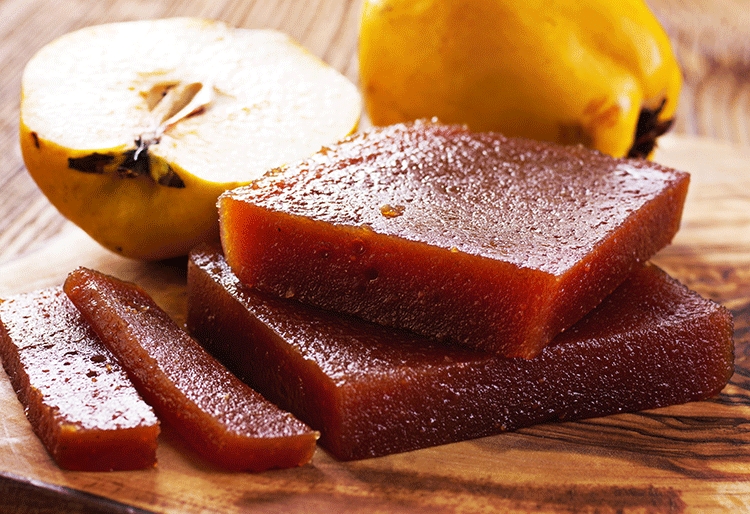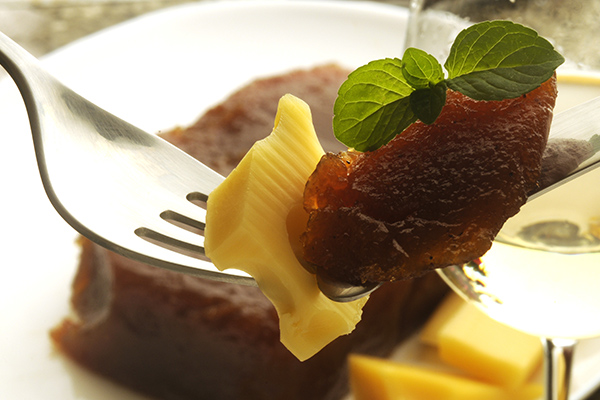How quince is made simply
We tell you how the quince is made quickly and easily. Discover the traditional homemade quince recipe and prepare this delicious dessert full of properties
on today's menu
Share

Ingredients
- 3 quinces. Choose the ripest ones with some marks on the skin and that feel soft to the touch.
- Sugar (80% of the weight of the quince pulp).
Preparation
1. Clean the quince well using a cloth.
2. Place them in a pan, cover them in water and bring to the boil. When the water begins to boil, reduce the heat by half and let them to cook for around 40/45 minutes.
3. Then, let them cool so you can peel them. Take the core out and cut the pulp into small pieces.
4. Weigh the amount of pulp and calculate 80% of that weight. This amount will be the quantity of sugar that you will need to complete the recipe.
5. Place the pulp in a large, flat saucepan and add all the sugar.
6. Stir the mixture well and cook on a medium/low heat. The sugar will gradually mix with the fruit.
7. You need to keep it on the heat for almost an hour, but the sugar will be fully mixed with the quince within 10 minutes, and the mixture will begin to gradually darken.
8. Use a whisk to get an even finer mixture. You can do this for as long as you want.
9. When the spoon stands up on its own in the pan, the mixture is ready.
10. Pour directly into low-sided, wide plastic containers. Cover them and leave them in the fridge for at least 24 hours.
Enjoy it as a dessert with a good cheese, or with toasts and pate. It is also an interesting flavour for accompanying meats, or as a topping for cakes, or as a honey substitute in cakes.

The origin of quince
This aromatic and intensely perfumed fruit comes from Asia. It is in season from the end of September to February, coinciding with the coldest months of the year.
The most common varieties are:
• Common: medium-sized fruits with a golden yellow coloured skin and aromatic flesh.
• Spheroidal: large-sized, yellow skin and fragrant pulp.
• Fontenay: large fruits with greenish yellow skin and perfumed pulp.
The most common variety in Spain is the Wranja Giant, which has good-sized, rounded fruit with smooth uneven skin, a compact cream-coloured pulp and an acidic flavour.
The properties of quince
Quince is a fruit that is mostly eaten as quince jelly and, due to the sugar content of this preparation method, the calorie value of the product is increased.
The health properties of quince are due to its abundant fibre content (pectin and mucilage) and tannins, substances which give it astringent properties.
It also contains malic acid, an organic acid that is part of the pigment in fruits and gives the fruit its flavour.






